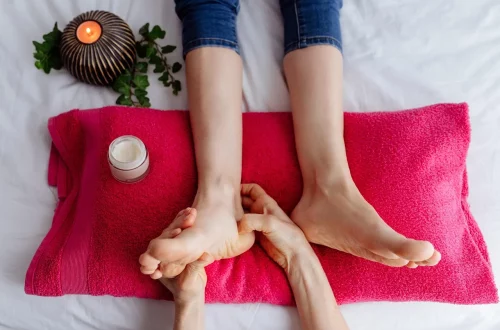
The Dangers of Getting Burnt from Tanning Bed Use
Tanning beds have become a popular method for achieving a sun-kissed glow, especially among those who want to avoid the unpredictability of outdoor sun exposure. However, beneath the allure of bronzed skin lies a darker reality that many users may overlook. The rapid increase in tanning bed use has raised considerable concerns among dermatologists and healthcare professionals regarding the associated risks, particularly the potential for skin damage.
While some individuals may believe that using a tanning bed is a safer alternative to traditional sunbathing, the truth is far more complex. The ultraviolet (UV) radiation emitted by tanning beds can lead to immediate and long-term health effects, including skin burns, premature aging, and even skin cancer. This article delves into the various dangers of tanning bed use, providing valuable insights that can help individuals make informed decisions about their skin health. As we explore these risks, it is essential to understand that the quest for a perfect tan can often come at a steep price, one that extends beyond aesthetics to encompass serious health implications.
Understanding the Risks of UV Radiation
Ultraviolet radiation is categorized into three types: UVA, UVB, and UVC. Tanning beds primarily emit UVA rays, which penetrate the skin more deeply than UVB rays. While UVB rays are primarily responsible for causing sunburn, UVA rays contribute significantly to skin damage and increase the risk of skin cancer. The intense exposure to these rays in tanning beds can lead to immediate adverse effects, such as burns, redness, and peeling of the skin.
One immediate danger of tanning bed use is the potential for severe burns. Tanning beds can generate heat that may cause discomfort or pain, leading to skin reactions similar to those experienced after excessive sun exposure. These burns can result in long-lasting damage, including hyperpigmentation and increased sensitivity, which can affect the skin’s appearance and texture.
Moreover, the repeated use of tanning beds can accelerate the aging process of the skin. Over time, the cumulative effects of UV exposure can lead to collagen breakdown, resulting in wrinkles, sagging skin, and other signs of premature aging. The desire for a tan can inadvertently contribute to a cycle of skin damage that compromises not only appearance but also overall skin health.
Beyond these immediate effects, long-term exposure to UV radiation from tanning beds poses a significant risk of skin cancer. Studies have shown that individuals who use tanning beds regularly are at a higher risk of developing melanoma, the deadliest form of skin cancer. This alarming statistic highlights the importance of understanding the full spectrum of risks associated with tanning bed use, emphasizing that the pursuit of a temporary tan may lead to lifelong consequences.
Skin Conditions Linked to Tanning Bed Use
The use of tanning beds can exacerbate existing skin conditions and lead to new dermatological issues. One common concern is the potential for the development of actinic keratosis, a rough, scaly patch on sun-exposed skin that can develop into skin cancer if left untreated. Individuals with fair skin or a history of sunburn may be particularly vulnerable to these changes.
Another condition associated with tanning bed use is photoaging, which is characterized by changes in skin texture, tone, and elasticity. This condition arises from the damage caused by UV radiation, leading to a coarse and uneven skin surface. Individuals who frequently use tanning beds may notice accelerated signs of aging, which can be disheartening for those seeking a youthful appearance.
Additionally, tanning beds can trigger or worsen conditions like rosacea and eczema. For individuals with sensitive skin, the heat and UV exposure from tanning beds can lead to flare-ups and increased irritation. The resulting inflammation can create a cycle of discomfort and damage that is difficult to manage.
It’s essential to recognize that while tanning beds may offer a temporary aesthetic benefit, they can have lasting consequences for skin health. Those considering their options for achieving a tan should weigh the potential risks against the desired outcomes. There are numerous sunless tanning products available that can provide a bronzed look without the harmful effects of UV exposure, allowing individuals to enjoy a radiant appearance while prioritizing their skin’s well-being.
Psychological Impact of Tanning Bed Use
The desire for a tan often goes beyond aesthetic preferences; it can be tied to deeper psychological factors. Many individuals associate tanned skin with beauty, health, and a carefree lifestyle. This perception can create a psychological dependence on tanning beds, leading to excessive use despite the known risks.
The phenomenon of “tanorexia,” or tanning addiction, has been increasingly recognized in recent years. Individuals suffering from this condition may feel compelled to seek out tanning beds regularly, often disregarding the potential for harm. This behavior can be alarming, as it reveals a disconnect between the perceived benefits of tanning and the real dangers that accompany it.
The psychological implications of tanning bed use extend to issues of body image and self-esteem. For some, reliance on a tanned appearance can mask underlying insecurities, leading to a cycle of dependence on tanning as a means of validation. This behavior can be particularly pronounced in adolescents and young adults, who may feel societal pressures to conform to certain beauty standards.
Addressing the psychological aspects of tanning bed use is crucial for promoting healthier attitudes toward skin health and beauty. Education about the risks associated with tanning beds, combined with fostering self-acceptance and body positivity, can help combat the allure of tanning. Encouraging individuals to embrace their natural skin tone and explore safe alternatives can ultimately lead to healthier choices and improved self-esteem.
Protecting Your Skin: Safe Alternatives to Tanning
Given the numerous dangers associated with tanning bed use, exploring safe alternatives for achieving a bronzed look is essential. There are various methods available that can provide a sun-kissed glow without exposing the skin to harmful UV radiation.
One popular option is the use of self-tanning products, which come in various forms, including lotions, sprays, and mousses. These products contain dihydroxyacetone (DHA), a color additive that reacts with the amino acids in the skin’s surface to produce a temporary tan. When used correctly, self-tanning products can provide a beautiful, natural-looking glow without the risks associated with UV exposure.
Another safe alternative is spray tanning, which is often offered at salons. Trained technicians can apply a fine mist of tanning solution that provides even coverage and a uniform tan. This method is particularly appealing for those who want to avoid the hassle of applying self-tanner at home.
Additionally, bronzing powders and makeup can create the illusion of tanned skin without any UV exposure. These products can be easily applied and removed, allowing for versatility in achieving the desired look without compromising skin health.
Incorporating sun protection into daily routines is also vital for skin health. Wearing broad-spectrum sunscreen, protective clothing, and seeking shade during peak sun hours can help safeguard the skin from UV damage. By prioritizing skin health and exploring safe alternatives to tanning, individuals can enjoy a radiant appearance without the associated risks.
**Conclusion**
The dangers of tanning bed use are significant and multifaceted, impacting both physical and psychological well-being. Understanding the risks associated with UV radiation, skin conditions, and the psychological implications of tanning can empower individuals to make informed choices. By embracing safe alternatives and prioritizing skin health, it is possible to achieve a beautiful appearance without compromising overall well-being.
*This article is for informational purposes only and should not be considered medical advice. For any health concerns, please consult a qualified healthcare professional.*




